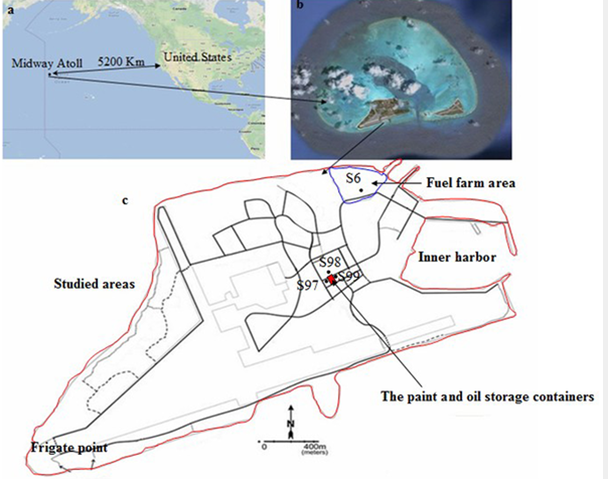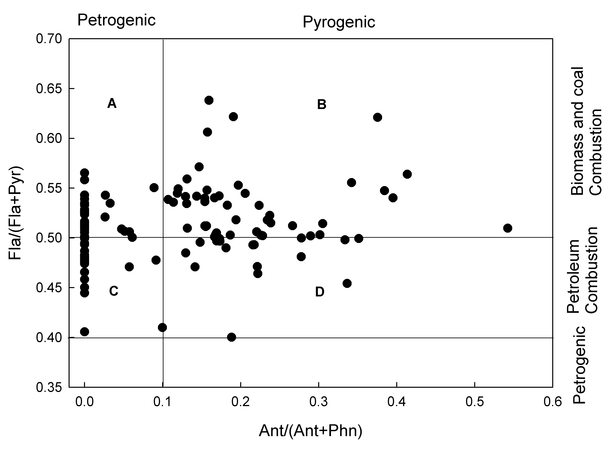Researchers Evaluate Carcinogenic Risk of PAHs in Soils of Midway Atoll
2014-02-20
Polycyclic aromatic hydrocarbons (PAHs) are an important group of environmental pollutants, which may accumulate in the organisms due to their low solubility and high octanol-water partition coefficient and undergo long-range transport. Furthermore, PAHs present potential carcinogenic risks to residents. Thus, 16 PAHs are selected as the priority pollutants due to their frequency and/or risk by the U.S. Environmental Protection Agency.
Midway Atoll is located in the North Pacific Ocean, approximately 1100 miles northwest of Oahu, Hawaii. It is the home to a variety of seabirds, Hawaiian green sea turtles, Hawaiian monk seals, and spinner dolphins. It played a historical role in World War II and was altered very heavily by the military during the war and afterwards.
Dr. YANG Yuyi, under the supervision of Prof. WANG Jun from Wuhan Botanical Garden made a comparative study on PAHs in soils of Midway Atoll to determine concentrations of PAHs, elucidate potential sources by PAHs diagnostic ratio analysis, and to evaluate the possible carcinogenic risk of PAHs.
The total concentrations of 16 PAHs ranged from 3.55 to 3200 µg kg−1 with a mean concentration of 198 µg kg−1. Higher molecular weight PAHs (4-6 ring PAHs) dominated the PAH profiles, accounting for 83.3% of total PAH mass. PAH diagnostic ratio analysis indicated that primary sources of PAHs in Midway Atoll could be combustion.
The benzo[a]pyrene equivalent concentration (BaPeq) in most of the study area (86.5%) was less than 40 µg kg−1 BaPeq and total incremental lifetime cancer risks of PAHs ranged from 1.00×10−10 to 9.20×10−6 with a median value of 1.24×10−7, indicating a minor carcinogenic risk of PAHs in Midway Atoll. However, the soil sites that contain an exhibiting carcinogenic risk still need management strategies.
Results were published in PLoS ONE entitled “Concentrations, Source and Risk Assessment of Polycyclic Aromatic Hydrocarbons in Soils from Midway Atoll, North Pacific Ocean”. This work was supported in part by The U.S. Fish and Wildlife Service (QXL), the National Institute on Minority Health and Health Disparities grant G12 MD007601 (QXL), and Open Funding Project of the Key Laboratory of Aquatic Botany and Watershed Ecology (JW).

Locations of study area on Midway Atoll, the Pacific Ocean(Image by WBG)

Cross plots for the ratios of Fla/ (Pyr+Fla) and Ant/ (Phn+Ant) (Fla: fluoranthene; Pyr: pyrene; Ant: anthracene; Phn:phenanthrene) (Image by WBG)